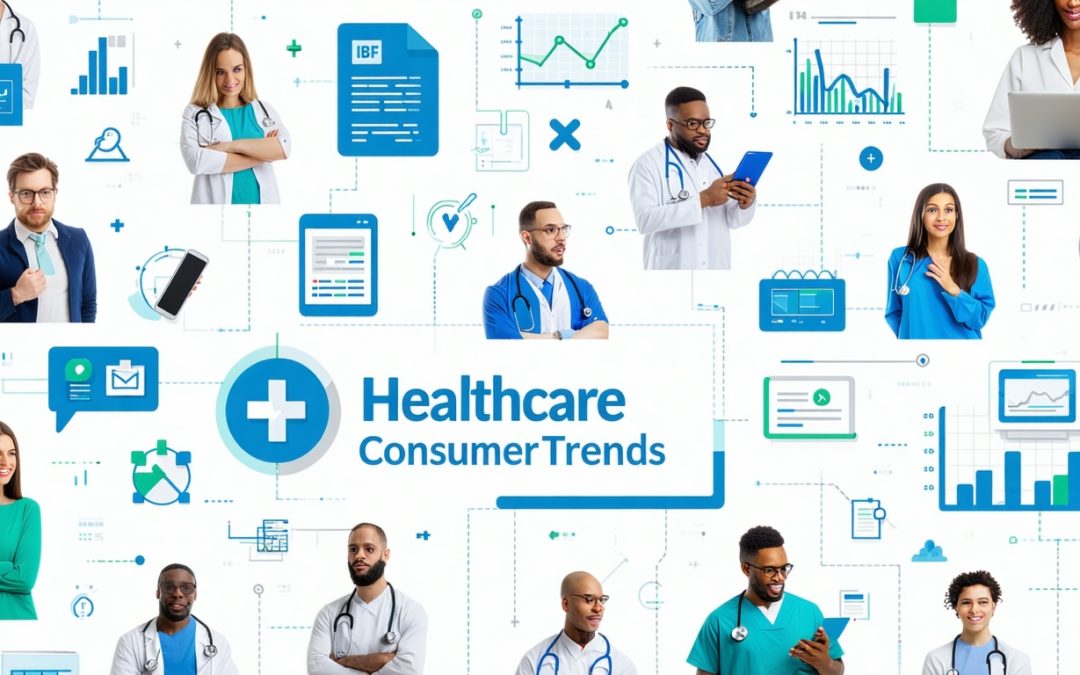Understanding Healthcare Cost Trends
Understanding healthcare cost trends is essential for young professionals considering private healthcare. Staying informed about these trends can help individuals make better decisions regarding their health and finances.
Importance of Staying Informed
Being aware of healthcare cost trends allows individuals to anticipate changes in expenses and plan accordingly. Knowledge of these trends can empower young professionals to choose the right insurance plans and healthcare services that fit their budget.
| Benefit of Staying Informed | Description |
|---|---|
| Better Financial Planning | Understanding costs helps in budgeting for healthcare expenses. |
| Informed Decision-Making | Knowledge of trends aids in selecting appropriate insurance plans. |
| Awareness of Available Services | Staying updated on services can lead to better healthcare choices. |
Factors Influencing Healthcare Cost Trends
Several factors contribute to the fluctuations in healthcare costs. Understanding these factors can provide insight into why prices may rise or fall over time.
| Factor | Description |
|---|---|
| Technological Advancements | New technologies can improve care but may also increase costs. For more on this, see healthcare technology trends. |
| Aging Population | An increasing number of elderly individuals often leads to higher healthcare demands. |
| Chronic Diseases | The prevalence of chronic conditions can drive up healthcare expenses. |
| Policy Changes | Legislative changes can impact insurance coverage and costs. For insights on this, refer to healthcare policy trends. |
| Market Dynamics | Competition among providers and insurers can influence pricing. For more details, check healthcare market trends. |
By understanding these factors and the importance of staying informed, young professionals can navigate the complexities of healthcare costs more effectively. For further insights into the evolving landscape, explore emerging trends in healthcare industry.
Understanding Healthcare Cost Trends
Overview of Increasing Healthcare Expenses
Healthcare expenses have been on a steady rise over the past few years. This trend is influenced by various factors, including advancements in medical technology, an aging population, and increased demand for healthcare services. Understanding these trends is essential for young professionals considering private healthcare options.
The following table illustrates the average annual increase in healthcare costs over recent years:
| Year | Average Annual Increase (%) |
|---|---|
| 2018 | 4.6 |
| 2019 | 4.8 |
| 2020 | 3.9 |
| 2021 | 6.5 |
| 2022 | 5.4 |
These statistics highlight the ongoing challenge of managing healthcare expenses. As costs continue to rise, it becomes increasingly important for individuals to stay informed about their options and the factors driving these increases. For more insights into the broader context, refer to our article on healthcare industry trends.
Impact on Individuals and Families
The rising costs of healthcare have significant implications for individuals and families. Many young professionals may find themselves facing higher premiums, deductibles, and out-of-pocket expenses. This financial burden can lead to difficult choices regarding healthcare access and affordability.
The following table outlines the potential financial impact of rising healthcare costs on families:
| Family Size | Average Monthly Premium (2022) | Average Out-of-Pocket Expenses (2022) |
|---|---|---|
| 1 | $450 | $1,200 |
| 2 | $900 | $2,400 |
| 3 | $1,350 | $3,600 |
| 4 | $1,800 | $4,800 |
As healthcare expenses increase, families may need to adjust their budgets, prioritize essential services, or explore alternative healthcare options. Understanding these trends is crucial for making informed decisions about private healthcare. For further information on how these trends affect healthcare choices, check out our article on healthcare consumer trends.
The impact of rising healthcare costs extends beyond financial implications; it can also affect access to necessary medical services. Young professionals should be aware of these challenges as they navigate their healthcare options.
Cost-Saving Strategies
Young professionals considering private healthcare can benefit from various cost-saving strategies. By utilizing preventive care services, exploring telemedicine options, and understanding health insurance plans, they can manage their healthcare expenses more effectively.
Utilizing Preventive Care Services
Preventive care services are essential for maintaining health and can significantly reduce long-term healthcare costs. These services include routine check-ups, vaccinations, screenings, and counseling. By catching potential health issues early, individuals can avoid more expensive treatments down the line.
| Preventive Service | Average Cost | Potential Savings |
|---|---|---|
| Annual Physical Exam | $200 | Early detection of issues can save thousands |
| Flu Vaccine | $40 | Prevents flu-related hospitalizations |
| Cholesterol Screening | $50 | Reduces risk of heart disease |
| Cancer Screenings (e.g., Mammograms) | $150 | Early detection can lead to better outcomes |
For more information on how preventive care can impact overall health costs, refer to our article on healthcare industry trends.
Exploring Telemedicine Options
Telemedicine has emerged as a cost-effective alternative to traditional in-person visits. It allows patients to consult healthcare providers remotely, often at a lower cost. This option is particularly beneficial for minor health issues, follow-up appointments, and mental health services.
| Telemedicine Service | Average Cost | Traditional Visit Cost |
|---|---|---|
| Virtual Consultation | $50 | $150 |
| Mental Health Session | $75 | $200 |
| Follow-up Appointment | $30 | $100 |
Telemedicine not only saves money but also time, making it an attractive option for busy professionals. For insights into the latest developments in telemedicine, check out our article on healthcare technology trends.
Understanding Health Insurance Plans
Navigating health insurance plans can be complex, but understanding the options available can lead to significant savings. Young professionals should compare different plans, focusing on premiums, deductibles, and out-of-pocket maximums.
| Plan Type | Average Monthly Premium | Deductible | Out-of-Pocket Maximum |
|---|---|---|---|
| HMO | $300 | $1,500 | $5,000 |
| PPO | $400 | $1,000 | $6,000 |
| EPO | $350 | $1,200 | $5,500 |
Choosing the right plan can help manage healthcare costs effectively. For more details on how to select the best health insurance plan, refer to our article on healthcare insurance trends.
By implementing these cost-saving strategies, young professionals can better manage their healthcare expenses while ensuring they receive the necessary care. Understanding the landscape of healthcare cost trends is crucial for making informed decisions.
Technology and Innovation
Role of Technology in Healthcare Cost Management
Technology plays a significant role in managing healthcare costs. By streamlining processes and improving efficiency, healthcare providers can reduce expenses and pass those savings on to patients. Key technological advancements include electronic health records (EHRs), telemedicine, and data analytics.
| Technology | Impact on Costs |
|---|---|
| Electronic Health Records (EHRs) | Reduces administrative costs and improves patient care coordination. |
| Telemedicine | Lowers travel costs and increases access to care, especially in rural areas. |
| Data Analytics | Enhances decision-making and identifies cost-saving opportunities. |
These innovations not only help in reducing costs but also improve the quality of care. For young professionals considering private healthcare, understanding these advancements is crucial for making informed decisions.
Benefits of Healthcare Innovation
Healthcare innovation brings numerous benefits that can positively impact both providers and patients. Innovations lead to improved patient outcomes, enhanced access to services, and more personalized care options.
| Benefit | Description |
|---|---|
| Improved Patient Outcomes | New treatments and technologies lead to better health results. |
| Enhanced Access | Innovations like telehealth make it easier for patients to receive care. |
| Personalized Care | Advances in technology allow for tailored treatment plans based on individual needs. |
Staying informed about healthcare industry trends and healthcare technology trends can empower young professionals to navigate the evolving landscape of private healthcare effectively. Understanding these innovations is essential for making choices that align with their health needs and financial situations.
Future Cost Trends in Healthcare Costs
As the healthcare landscape continues to evolve, understanding future trends in healthcare costs is essential for young professionals considering private healthcare. This section will explore predictions and forecasts, as well as potential solutions and interventions that may shape the future of healthcare expenses.
Predictions and Forecasts
Healthcare costs are expected to rise in the coming years due to various factors, including an aging population, advancements in medical technology, and increased demand for services. According to recent studies, healthcare spending is projected to grow at an annual rate of approximately 5.4% over the next decade.
| Year | Projected Healthcare Spending Growth (%) |
|---|---|
| 2023 | 5.4 |
| 2024 | 5.5 |
| 2025 | 5.6 |
| 2026 | 5.7 |
| 2027 | 5.8 |
These trends indicate that young professionals should prepare for higher healthcare expenses in the future. Additionally, the shift towards value-based care may influence how services are priced and delivered. For more insights into the evolving landscape, refer to our article on healthcare industry trends.
Potential Solutions and Interventions
To address the rising costs of healthcare, several potential solutions and interventions are being explored. These include:
- Increased Use of Telemedicine: Telehealth services can reduce costs by minimizing the need for in-person visits. This approach not only saves time but also lowers transportation and facility costs.
- Preventive Care Initiatives: Emphasizing preventive care can help reduce long-term healthcare expenses. By focusing on early detection and management of health issues, individuals can avoid more costly treatments down the line.
- Healthcare Technology Innovations: Advancements in technology, such as artificial intelligence and data analytics, can streamline operations and improve efficiency in healthcare delivery. This may lead to cost reductions for both providers and consumers. For more on this topic, see our article on healthcare technology trends.
- Policy Changes: Legislative efforts aimed at increasing transparency in pricing and improving access to affordable care can significantly impact healthcare costs. Advocacy for policies that promote competition among providers may also help lower prices.
- Personalized Healthcare Approaches: Tailoring healthcare services to individual needs can enhance outcomes and reduce unnecessary expenditures. This trend is gaining traction as more data becomes available to inform treatment decisions. For further reading, check out our article on personalized healthcare trends.
By staying informed about these predictions and potential solutions, young professionals can better navigate the complexities of healthcare costs and make informed decisions regarding their healthcare options. Understanding these trends is crucial for effective financial planning and ensuring access to necessary services.
Navigating the Healthcare Landscape
As young professionals consider private healthcare options, understanding how to navigate the healthcare landscape is essential. This involves advocating for transparent pricing, seeking affordable healthcare options, and empowering oneself as a healthcare consumer.
Advocating for Transparent Pricing
Transparent pricing is crucial for making informed decisions about healthcare services. Many individuals are unaware of the costs associated with various treatments and procedures until after they receive care. Advocating for clear pricing can help individuals avoid unexpected expenses and better plan their healthcare budgets.
Healthcare providers and facilities are increasingly being encouraged to disclose their prices upfront. This allows patients to compare costs and make choices that align with their financial situations. Young professionals should actively seek out providers that offer transparent pricing and inquire about the costs of services before receiving care.
| Service Type | Average Cost (USD) |
|---|---|
| Routine Check-Up | 100 – 250 |
| MRI Scan | 400 – 3,500 |
| Blood Test | 100 – 1,000 |
| Physical Therapy Session | 50 – 350 |
Seeking Affordable Healthcare Options
Finding affordable healthcare options is a priority for many young professionals. Various strategies can help individuals access quality care without breaking the bank.
- Researching Insurance Plans: Understanding different health insurance plans can lead to significant savings. Young professionals should compare premiums, deductibles, and coverage options to find a plan that meets their needs and budget. For more insights, refer to our article on healthcare insurance trends.
- Utilizing Community Health Services: Many communities offer health services at reduced costs. These services may include clinics, preventive care, and wellness programs.
- Exploring Telemedicine: Telemedicine has become a popular option for accessing healthcare services at lower costs. Virtual consultations can save time and money while providing necessary medical advice. For more information, check out our article on healthcare technology trends.
Empowering Yourself as a Healthcare Consumer
Empowerment as a healthcare consumer involves being informed and proactive about personal health decisions. Young professionals can take several steps to enhance their healthcare experience:
- Educating Themselves: Staying informed about healthcare cost trends and emerging healthcare industry developments can help individuals make better choices. Resources such as articles on healthcare consumer trends can provide valuable insights.
- Asking Questions: When visiting healthcare providers, individuals should feel comfortable asking questions about their treatment options, costs, and any potential financial assistance available.
- Utilizing Health Apps: Many digital health applications can help track medical expenses, manage appointments, and provide reminders for preventive care. These tools can enhance the overall healthcare experience and promote better health management.
By advocating for transparent pricing, seeking affordable options, and empowering themselves, young professionals can navigate the healthcare landscape more effectively. Understanding these aspects is essential for making informed decisions about private healthcare and managing personal health costs.












0 Comments